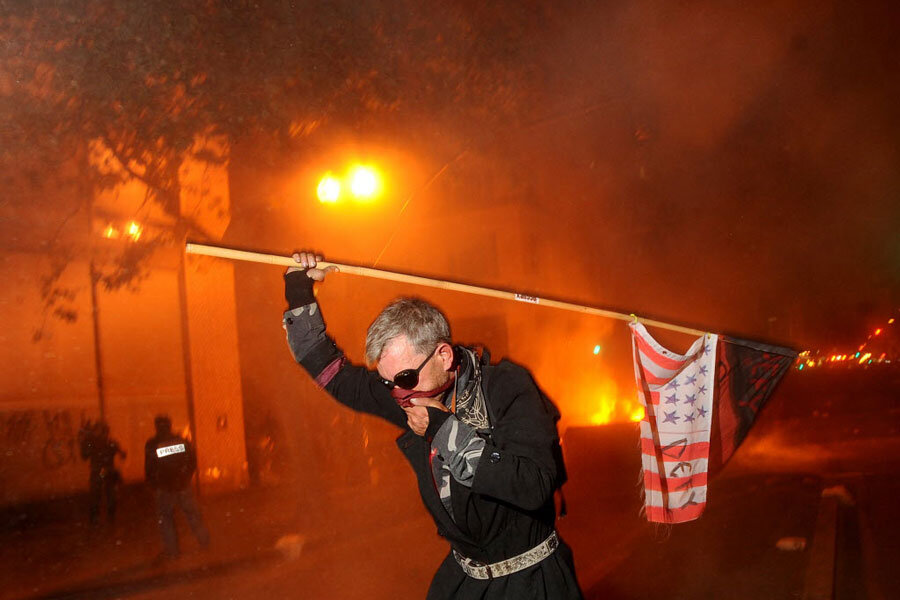Cities brace for Ferguson decision: What has Oakland learned from past violence?
Loading...
| Los Angeles
Cities from Boston to Seattle are bracing for civic violence in the wake of a decision, expected soon, by the grand jury in the Ferguson case.
Networks of protesters nationwide are vowing to take to the streets, whatever the decision. The grand jury is weighing whether to file charges against the white police officer who fatally shot an unarmed black teen in an incident whose specifics have been hotly disputed.
Police in many cities are preparing for potential outbreaks of violence. But at the same time, officials in places such as Oakland, Calif., that have been hit particularly hard by civic protests in recent years say they have learned lessons and are better prepared this time around.
In fact, the Ferguson case may present a good test of just how much progress police have made in handling civic unrest, some experts suggest.
“If people are determined to wage protests in various cities, there is very little that can stop them,” says Philip Stinson, assistant professor of criminal justice at Bowling Green State University in Ohio. “There is going to be a fine line between allowing peaceful protests ... and chaos erupting in many places.”
Violence shook many cities during the Occupy movement several years ago, and Professor Stinson, for one, is not optimistic about the degree of progress since then. Still, he suggests, some changes have begun to make a difference.
One lesson from the Occupy movement might be in setting up designated protest "free speech" zones, much like those that exist on many public university campuses for protesters, he says. “If people have an opportunity to assemble peacefully, it could reduce potential violence. And [that] is where community policing comes into play,” he adds.
For its part, the Oakland Police Department (OPD) has picked up on such ideas. It has been trying to turn around its image of heavy-handed confrontations between protesters and police – something that occurred during protests following the George Zimmerman not-guilty verdict in 2013.
In a statement, the OPD declared its commitment to protecting civil liberties as well as public safety. “The goal of the Oakland Police Department is to facilitate peaceful demonstrations and free speech,” the statement reads, with a commitment to “policing in a manner that is constitutional and ethical.”
The city has set up four “healing centers” – buildings and zones where protesters can gather to air concerns.
In the wake of the violent clashes during the Occupy movement, the OPD implemented other measures that include the use of body cameras on officers and a greater emphasis on community policing.
“We will work in collaboration with the community, businesses, city agencies and law enforcement partners to maintain a healthy and peaceful environment,” the statement continues.
At the same time, however, Oakland Mayor Jean Quan sent a letter to local businesses that recommends they board up and leave their cash registers empty when the grand jury decision is announced.
Stinson says he sees slow progress nationwide since the Occupy movement, adding that if the decision is announced in the next few days, this weekend may “be a very interesting one.”







